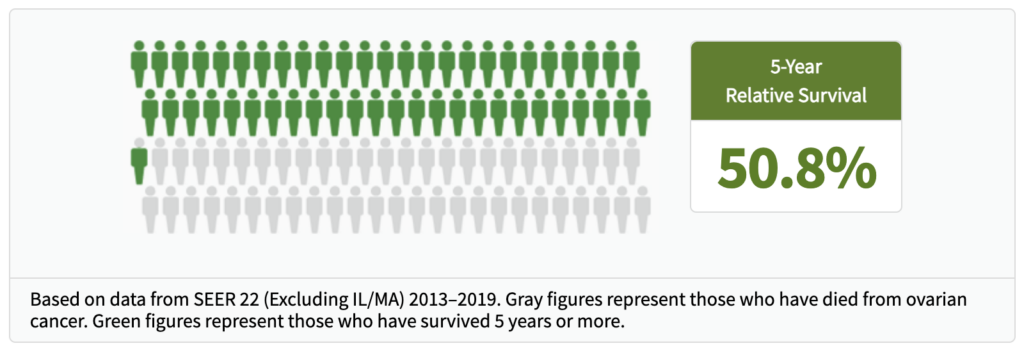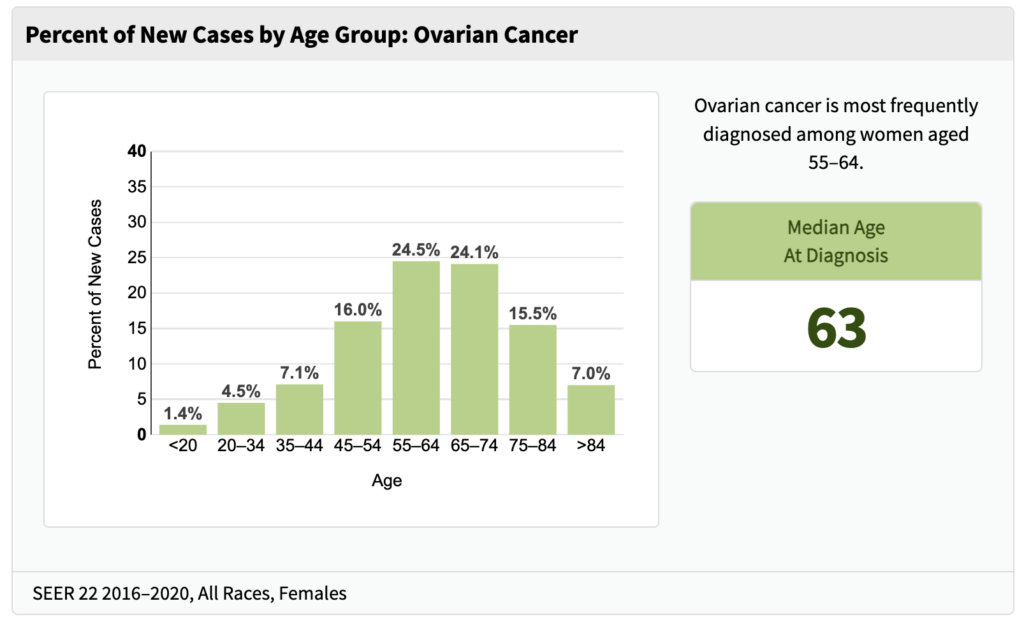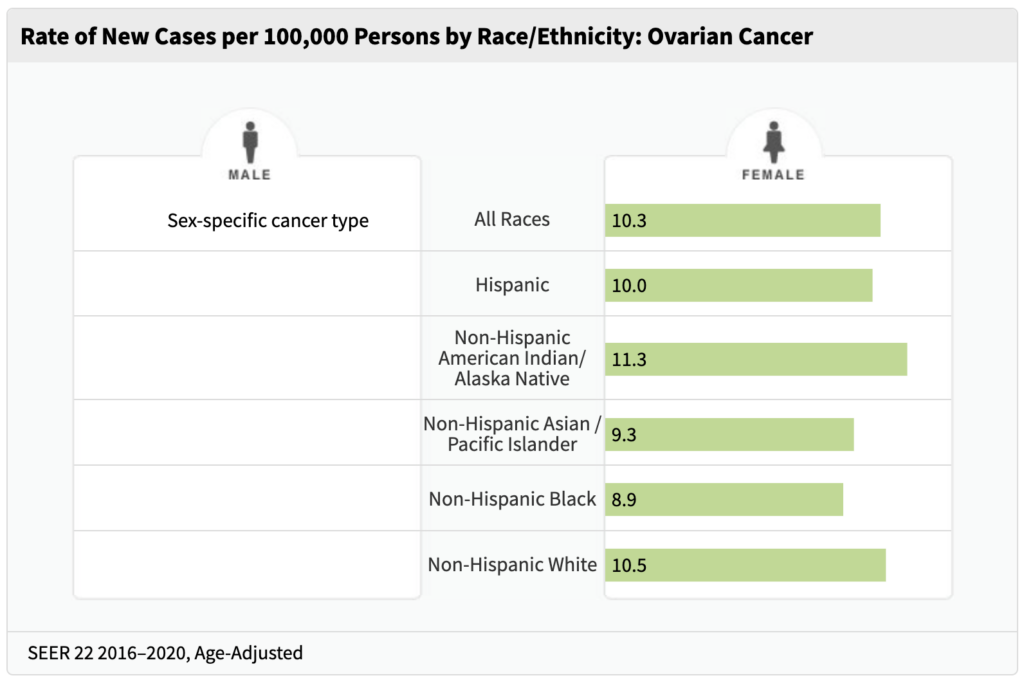Ovarian Cancer Statistics
In the United States, doctors must report any diagnosis of cancer to a state registry. The federal government, through the Centers for Disease Control and Prevention’s National Program of Cancer Registries, oversees the registries in 45 states, the District of Columbia and three territories. The Surveillance, Epidemiology and End Results (SEER) Program of the National Cancer Institute funds the remaining five statewide cancer registries. Together, the two programs cover the country’s population.
The following ovarian cancer statistics come primarily from the most recent findings of the Surveillance, Epidemiology and End Results (SEER) Program of the National Cancer Institute. SEER numbers are age-adjusted and based on actual data.
SEER data is available for most data through 2020. More recent statistics are projections from the American Cancer Society.
Keep up with the latest statistics by joining our email list.
Ovarian Cancer Statistics at a Glance

- The American Cancer Society estimates that in 2024, about 19,680 new cases of ovarian cancer will be diagnosed and 12,740 women will die of ovarian cancer in the United States.
- Mortality rates for ovarian cancer have declined only slightly in the forty years since the “War on Cancer” was declared. However, other cancers have shown a much greater reduction in mortality, due to many factors.
- The Surveillance, Epidemiology and End Results (SEER) Program reports that in 2021 in the United States approximately 238,484 women were alive who had been diagnosed with ovarian cancer (including those who had been cured of the disease).
- Ovarian cancer accounts for 2.5 percent of cancers in women.
- While the 11th most common cancer among women, ovarian cancer is the fifth leading cause of cancer-related death among women.
- Ovarian cancer is the deadliest of gynecologic cancers.
- Mortality rates are slightly higher for African American women than for Caucasian women.
Ovarian Cancer Lifetime Risk and Survival Statistics
It’s important to be aware of the risk factors for developing ovarian cancer, as well as average rates of diagnosis. Five-year survival rates are commonly used to compare different cancers. Survival rates vary greatly depending on the stage of diagnosis.
- A woman’s lifetime risk of developing ovarian cancer is 1 in 87.
- A woman’s lifetime risk of dying from invasive ovarian cancer is 1 in 130.
- Ovarian cancer survival rates are much lower than other cancers that affect women.
- The relative five-year survival rate for ovarian cancer is 50.8% percent.

Ovarian Cancer Statistics By Age

- Ovarian cancer rates are highest in women aged 55-64 years.
- The median age at which women are diagnosed with ovarian cancer is 63, meaning that half of women are younger than 63 when diagnosed with ovarian cancer and half are older.
- The median age of death from ovarian cancer is 70.
Ovarian Cancer Cases By Race

For more information, visit: